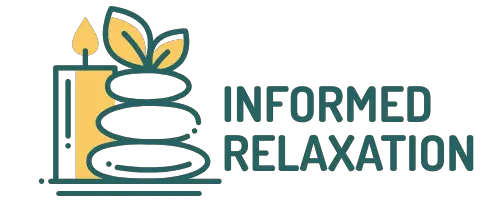Relaxation techniques can help you reduce daily stress and find inner calm. When practiced regularly, relaxation techniques can improve your life in many ways, including better sleep, improved concentration and focus, a boosted immune system and reduced levels of anxiety.
Relaxation techniques may include deep breathing exercises, visualizations or guided imagery, progressive muscle relaxation, autogenic training, mindfulness meditation and yoga.
While there are many approaches you can use to relax your mind and body, it is important to remember that relaxation is an individualized journey.
Each person’s experience with relaxation may be different based on the techniques that work best for them.
Exploring different techniques until you find one that feels right for you is essential to start seeing benefits.
Depending on the technique you choose to practice there will most likely be a learning curve as well as trial and error involved in mastering these skills.
However, once you decide which technique works best for you– minor adjustments along the way should make it easier to implement into your daily routine.
Benefits of Relaxation Techniques
The main benefit of relaxation techniques is the reduction of physical and mental stress. Regular practice can improve sleep, reduce stress-related medical conditions, enhance concentration, and improve overall wellbeing.
Relaxation techniques provide an opportunity to slow down and take a break from everyday stressors.
When practiced regularly, these techniques can result in increased feelings of peace and tranquility as well as improved mental clarity.
Relaxation has many physical benefits; when the body is relaxed, it can recover faster from fatigue, lower blood pressure, increase the number of white blood cells in the blood, support digestion and prevent headaches and other tension-related pain.
Relaxation techniques also provide psychological benefits such as:
- Reducing anxiety and depression;
- Enhancing emotional stability;
- Improving coping with difficult situations;
- Inducing a feeling of contentment;
- Helping to cope with difficult changes in life;
- Improving concentration;
- Restoring energy levels during periods of fatigue or illness;
- Providing a way to tune out distractions that might be causing emotional upset or overload.
Types of Relaxation Techniques
Relaxation techniques are exercises and practices that can help you manage stress and improve overall wellbeing. There are many different types of relaxation techniques, ranging from deep breathing and mindfulness to yoga and progressive muscle relaxation.
In this article, we’ll explore the different relaxation techniques, as well as how to use them effectively in order to reduce stress levels.
Progressive Muscle Relaxation
Progressive Muscle Relaxation is a relaxation technique where you systematically tense and relax individual muscle groups.
This technique helps reduce overall tension, fatigue, and helplessness by slowly tensing and relaxing different muscle groups. It involves consciously tightening (or tensing) each major muscle group in the body for several seconds, then releasing the tension to cause deep relaxation.
When practicing progressive muscle relaxation, your goal is to become aware of the changes that occur between tension and relaxation.
This technique can be done lying down or sitting comfortably in a chair or on a bed – whichever is more convenient for you.
First, focus on your breathing as you inhale deeply through your nose and exhale slowly through your mouth.
Next, start with one leg at a time; starting with either one is fine.
- Bend the knee of this leg tightly so that it feels almost uncomfortable but not so tight that it causes pain. Hold this position five seconds; then release it completely for another five seconds before doing the next exercise for that leg.
- Work up the legs until all muscles are relaxed including each foot up to your calf muscles or thighs depending on how far down you want to go.
Do the same exercises for both arms by making fists while observing how they contract as they become tight and then feel as they relax back into their regular state when released – continuing this exercise up till shoulders and neck muscles are fully relaxed.
Finally work on neck muscles with either clockwise or anti-clockwise circular movements so that any remaining tension is removed from them too – before ending the exercise giving yourself at least 5 minutes of peacefulness till next session!
Autogenic Training
Autogenic training is a simple, safe, and natural relaxation technique that re-establishes your body’s equilibrium.
This is a self-learning approach to deep relaxation by which you become aware of how your body is responding to internal and external environment.
Autogenic training involves the use of a series of pre-established thoughts or phrases that can help induce a state of physical and mental relaxation.
Through repeated practice, an individual develops the ability to activate and use his or her own mental resources to relax muscle tension, reduce anxiety, improve concentration and focus, and achieve inner balance.
The technique begins with six exercises which are usually repeated three times each:
- Weight While Lying Down: Visualizing yourself in a relaxed state with an even distribution of weight all over your body
- Arm heaviness: Visualizing arms becoming heavier while maintaining complete relaxation throughout your body
- Leg heaviness: Visualizing leg muscles becoming relaxed and heavy
- Abdominal warmth: Imagining warmth around one’s abdominal area
- Heart rhythm control: Focusing on slowing one’s heart rate down with each breath
- Cool forehead: Visualizing peacefulness as one projects coolness onto the forehead.
After mastering these exercises, individuals are encouraged to work on longer phrases such as “inner harmony” or “I am composed” in order to develop deeper states of physical and mental relaxation.
Autogenic training offers many psychological benefits such as reducing stress levels, increased sense of well-being, improved moods, more focused attention span and enhanced performance at work or in sports activities.
Guided Imagery
Guided imagery is a relaxation technique that encourages you to use your imagination to bring about a sense of peace and wellness. It involves creating vivid mental images in order to relax and nourish your entire being.
It usually involves listening to verbal instructions or music that leads you on a creative mental journey, where you can explore different environments and scenarios.
It does not require any special side effects or medications, so it can be a great option for those who might be open to trying something new.
Guided imagery is designed to assist the body in creating an environment that facilitates healing. It allows clients to temporarily escape from the stress of everyday life by providing them with an opportunity to focus their minds on something that feels safe, soothing and peaceful.
It is often used as part of therapies such as cognitive-behavioral therapy (CBT), hypnotherapy, and body awareness techniques such as mindfulness. It can also be used effectively on its own, or in combination with other relaxation modalities. Some typical benefits reported after practicing guided imagery include:
- Improved emotional well-being
- Reduced stress levels
- Increased physical resilience
- Improved problem-solving skills
Breathwork
Breathwork is a powerful relaxation technique that can be done in a group or solo. This type of meditation focuses on focusing and controlling your breathing to reduce stress levels and slow down your mind.
When practicing breathwork, it’s important to remember that different techniques require different levels of focus.
Within the realm of breathwork techniques, practicing “conscious breathing” is perhaps the most straightforward form. In this practice, find a comfortable sitting position and ensure that your spine is straight and well-supported by the floor.
Start by inhaling slowly from your nose up to a count of four, pause for another count of four, exhale out of your nose over the same amount of time, again pausing for four counts at the end.
This kind of intentional mindful breathing can be powerfully calming both mentally and physically. As you become comfortable with this technique, you can play around with deepening your inhalations as well as slowing them down further or less as you desire.
Regular breathwork practice helps reduce stress and anxiety levels in both body and mind while creating balance within us all.
How to Practice Relaxation Techniques
Relaxation techniques are a powerful way to reduce stress and improve overall wellbeing. Many people have become aware of the benefits of relaxation techniques, and are now looking for ways to incorporate them into their daily lives. This article will provide a practical guide to relaxation techniques and how to use them effectively.
Find a Quiet Place
When looking to practice relaxation techniques, it is important to find a quiet, comfortable place where you can be alone.
For some people, this may be a bedroom or an office while for others it may be somewhere outside of the home.
You will want to ensure that the environment you choose is free from disturbances and distractions so that you can focus on the relaxation techniques that you are learning.
Find a comfortable position, either sitting or lying down, whatever feels best for your body type and size. If sitting in a chair, ensure that your feet are flat on the floor with your back straight against the chair and shoulders relaxed.
If lying down, make sure that your head and neck are comfortably supported by several pillows so as not to strain any muscles or cause discomfort.
Once you have achieved a comfortable position in the space you have chosen, close your eyes if possible to help create a sense of calmness and focus on achieving inner peace through slower and deeper breathing patterns.
Focus solely on breathing in slow and steady manner like counting “1-2-3” with each inhale before slowly releasing it as part of an exhale out of the same time “1-4-5” – keeping this pattern of long deep inhalations with relaxed exhalations helps break up any anxiety by interrupting it – breathing will gradually become shallower naturally as you begin to relax.
You also use that instrumentation – focusing particular attention towards sensations focusing in various parts of our body like shoulders, eyes, tongue, lips, chin etc.
Optionally, if somebody having great difficulty concentrating, murmuring some sound (OMM) with each breath.
The entire process should take around 10 minutes before starting the new day or getting into some tasks.
Focus on Your Breath
Focusing on your breath can be a great way to begin your relaxing journey. When you notice your mind wandering, simply refocus on the sensation of your breath.
Start by placing both feet flat on the floor and close your eyes, if this feels comfortable for you.
Then bring awareness to each of your senses: how the chair feels underneath you, what the temperature is like in the room, and how each inhalation and exhalation of air brings pleasure to your chest, abdomen, and other parts of your body.
If needed, remind yourself that it’s okay to take a few moments out of a busy day to simply rest. You don’t have to worry about doing anything or thinking about anything at all.
Just let yourself be with each breath for however long it takes for tension or anxiety to lessen.
Try counting each breath from 1-4 as you inhale and exhale slowly at an even pace. This can help quiet any racing thoughts so that all that is left is a kind of mental stillness that allows worries or concerns to dissipate slowly.
If counting gives rise to further thoughts or distracts you more than calms you down, then simply return attention back onto the sensation of breathing without judgment or expectation.
Allow Your Muscles to Relax
When practicing relaxation techniques, it is important to relax your muscles. Without releasing the tension in your muscles, it will be difficult to reach a relaxed state. There are many techniques for allowing your muscles to relax.
The first technique is progressive muscle relaxation. Start by clenching and releasing your toes, then move up your body one muscle group at a time—including calves, thighs, stomach, chest, arms and hands —clenching and releasing each group before moving on. It can be helpful to make observations of each group before and after you clench it; notice how different the tension feels when you release it.
Another technique is visual imagery: imagine yourself slowly sinking into a comfortable chair or couch or soaking into a warm bathtub full of soft bubbles. Invoke happy memories associated with restful places such as lying in the warm sun or floating on a peaceful lake. Use descriptive words such as “sinking” “warm” and “peaceful” so that these images become strongly associated with relaxation. You may also want to use a guided meditation recording as an aid when practicing visualization exercises.
Finally autogenic training focuses on using verbal cues or self-statements within a calming environment without outside distractions or noise to slow down the heart rate and trigger the relaxation response within our bodies. Self-statements can include things like “My arms are heavy” or “My forehead is cool”, all spoken aloud while focusing on the power of our words in order to bring about physical relaxation responses from deep within us.
By learning these different techniques and practicing regularly we can learn how to consciously create an atmosphere of calmness whenever we feel stressed out.
Visualize a Calming Scene
Visualization is the process of creating a vivid mental image in your imagination. It is a powerful relaxation technique you can use anywhere and anytime to reduce stress. Whenever you feel stressed, anxious, or overwhelmed, you can bring yourself back to center by visualizing a calming scene.
To practice visualization, begin by finding a comfortable, quiet place where you can relax without interruption. Take deep breaths as you close your eyes and clear your mind of all other thoughts. Imagine a peaceful setting and allow the details of that scene to become vivid in your mind’s eye—the colors, the sounds, the smells, the feel of the air on your skin—all providing feelings of calm and peace within yourself.
You may wish to focus on an idea of serenity such as:
- lying in a grassy meadow gazing up into a bright blue sky dotted with fluffy clouds
- standing under an enormous tree with its leaves rustling softly above you in a gentle breeze
Give yourself permission to bring into this visualization exercise whatever calming images come naturally to your imagination as often as needed whenever stress arises.
For those who need more guidance to learn how to practice relaxation techniques like visualization, it may help to find guided meditation recordings that are designed specifically for this purpose. These recordings can provide even more detailed instruction.
With repeated practice over time each person will discover their own unique set of techniques that allows them to quickly reduce tension and increase feelings of restful wellbeing at any moment or location – no matter how difficult their situation may be!
Can Relaxation Techniques Be Done at Home?
Yes, there are many effective tips for home relaxation that can be easily done. Simple techniques such as deep breathing, meditation, or even just finding a cozy spot to unwind can help reduce stress and promote relaxation. Creating a peaceful home environment and incorporating these practices into your daily routine can make a big difference.
Conclusion
Although different relaxation techniques can be tailored to individual preference and goals, it is essential to practice proper breathing. Deep breathing helps to reduce stress, anxiety, and tension while also providing greater energy and improved mental clarity.
Relaxation techniques should always be practiced in a quiet environment and should never involve any form of physical exertion beyond what makes you comfortable. Although some people are able to relax quickly with practice, it is important to remember that relaxation takes time.
It is natural for your mind and body to go through the process of returning to a relaxed state gradually, so be patient with yourself during this process. You will find that with regular practice your ability to relax will improve.




